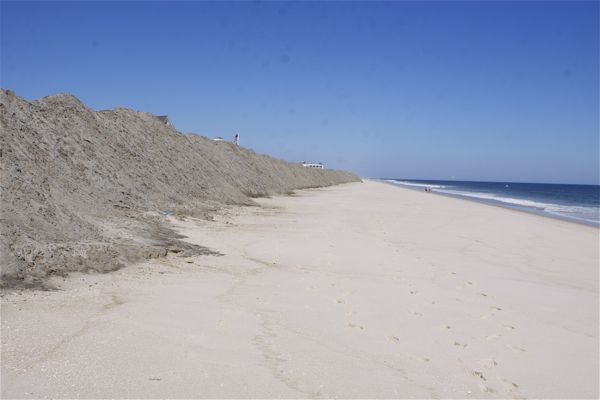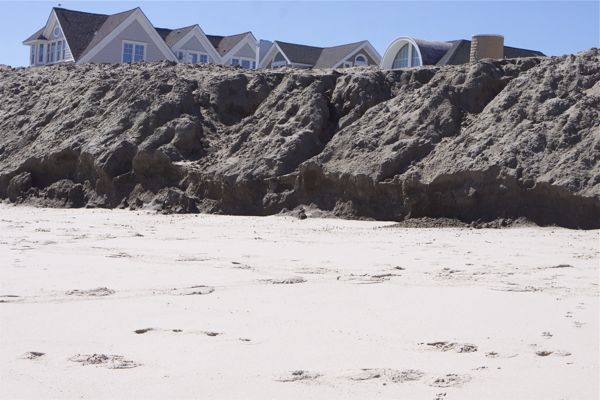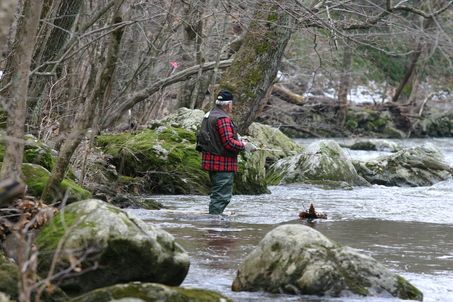Mitigation Deal With Gas Pipeline Would Destroy The Commission and Staff’s Integrity

There’s more to this than I thought Charlie … I’m telling you there’s a lot more. […]
You was my brother Charlie – You should have looked out for me a little bit.
You should have taken care of me just a little bit, so I wouldn’t have had to take them dives for the short end money. …. It was you, Charlie. ~~~ Watch the full scene
- When discretion, politics, and money combine, they tend to produce a corrupt review process, whereby professionals lack a defensible legal and scientific basis to say “NO”, while they are pressured to find a way to approve the project, offset by some kind of “equivalent” mitigation package that the politicians can hold out as “equivalent protection” (expect a money payoff and land donation). ~~~ Bill Wolfe 8/28/13
- Lohbauer also mentioned “offsets,” shorthand for contributions to environmental work in the Pinelands, a kind of compensation for the development permit. That would harken back to 2005, when the Pinelands Commission came under fire for allowing Atlantic City Electric to build a new southern Ocean County power line on the west side of the Garden State Parkway to avoid conflicts in suburban neighborhoods. The power company agreed to pay $13 million into a conservation fund that was used to put several thousand acres into preservation. ~~~ Asbury Park Press 9/28/13
It is amazing to watch the desperate contortions that corporate flacks and their captured spineless regulators will go through after being caught with their pants down.
Yesterday, South Jersey Gas Company (SJG) made a presentation on their proposed pipeline to the Planning and Implementation Committee of the Pinelands Commission.
The presentation was more of a regulatory house of cards than a science based impact assessment.
The questions posed by the Commissioners revealed that they know very, very little about the project or its impacts and risks; that they rely heavily on South Jersey Gas Co. expertise and promises; and that the project would basically be privately self monitored.
But immediately after the SJG presentation and a brief round of softball questions, without providing an opportunity for public comment and without any Committee discussion or a vote, the Chair of the Pinelands Commission directed staff to begin negotiation of a “Memorandum or Agreement” (MOA) with SJG to authorize construction of a 22 mile $100 million pipeline through the Pinelands National Reserve.
As usual, veteran reporter Kirk Moore of the Asbury Park Press got the story exactly right: Pinelands Commission considers waiving rule on forest pipelines – Pinelands Commission takes step toward waiving rule
But in a new twist, the company asserts its primary goal is to improve reliability of its network. Critics pounced on that Friday, saying the state Board of Public Utilities, in endorsing the project, wants it for system reliability and the power plant, and would not approve it without both uses.
“A board order is like a permit. They’re not holding a gun to their heads, saying ‘Build this or else’,” said Bill Wolfe of the group Public Employees for Environmental Responsibility. “Now they (company officials) are building this resiliency argument.”
And of course, Marlon Brando tells the story far better than I could imagine, so, maybe instead of reading this post, just read Kirk’s story and watch the video and use your imagination.
The proposed SJG pipeline violates the forest policies of the Comprehensive Management Plan (CMP). Under the CMP and Commission regulations, the only way that the Commission could approve the project is under a MOA.
But, Commission regulations limit a MOA to the projects of “public agencies”
Under normal circumstances, the Pinelands Commission expects that a public agency’s development plans will conform to all of the land use [N.J.A.C. 7:50, Subchapter 5] and development standards [N.J.A.C. 7:50, Subchapter 6] of the Pinelands Comprehensive Management Plan [CMP]. However, there may be instances where a public agency believes that a specific development plan can not conform to all of the CMP’s requirements.
Although the Pinelands Commission expects these types of situations to be very rare, the CMP [N.J.A.C. 7:50 – 4.52 (c)] does allow the Commission to enter into an intergovernmental agreement that authorizes a public agency to undertake development activities that are not fully consistent with Pinelands land use and development standards.
The obvious fly in the ointment is that the South Jersey Gas Company is NOT a “public agency” and the pipeline is not a public development plan . Instead, the pipeline is a privately owned profit seeking speculative economic investment.
The pipeline originally was conceived, designed, and justified as a dedicated pipeline to re-power the private BL England power plant in Beesley’s Point.
So, SJG needs to conjure up some public benefits and public rationale.
In an attempt to comply with the CMP and MOA regulations, South Jersey Gas Co. desperately is trying to misrepresent this private speculative investment to serve a private power plant as:1) a public project, 2) that provides public benefits (“reliability”); 3) ordered by the BPU and DEP, 4) that benefits the Pinelands.
[all these so called “public benefits” have not been weighed against all the negative impacts on the Pines from: 1) the pipeline construction and operation; 2) the BL England plant it would serve; 3) the air quality and greenhouse gas emissions of the pipeline and the BL England plant; 4) current climate change ecological impacts in Pines forests that would be exacerbated; r 5) the impacts from the secondary growth the pipeline would induce. ALL of these impacts – with minor exceptions- were virtually ignored by the SJG presentation but must be considered by the Commission.]
To support that lie, they have: 1) cynically renamed the project as the “BL England and Reliability Pipeline”, 2) exaggerated the “reliability” aspects, including the benefits to the Pinelands in terms of number of homes; and 3) essentially misrepresented the BPU and DEP Orders as State mandates or directives to build the pipeline and repower the BL England plant.
In fact, the pipeline and the BL England re-powering are private speculative economic profit seeking ventures done purely at risk. It is unclear how many homes in the NJ Pinelands would be provided “reliability”, but it is far less than the 63,000 the company tried to suggest would benefit.
On the” reliability” issues, there also seems to be a conflict with the BPU testimony.
Previously, BPU told the Commission that the project was justified primarily by the Energy Master Plan and re-powering of the BL England plant. But BPU also noted secondary reliability objectives. BPU stated that the Board approved the project as serving in state energy capacity and that BOTH objectives would be served. BPU said the project was not feasible without the primarily BL England re-powering objective.
In contrast, SJG stated that they would pursue the project as a stand alone reliability project, independent of the BL England plant. So, what began as a dedicated pipeline to BL ENgland has now morphed into a back up reliability project!
And of course SJG would be pleased to buy the Pinelands Commission approval with $10 – $20 million of your ratepayer money, all while earning a 10% profit on that bribe under BPU 100% cost recovery as a “regulatory requirement”.
This pipeline project is following the corrupt mitigation model set by the SR power line through the Delaware Watergap.
Similarly seeking to mask what’s going on, the Pinelands Commission is desperately try to create the false impression that the project is being evaluated on its merits, independently, in the public interest, based on science, and in a transparent and objective fashion, instead of being dictated from Trenton and south jersey political power brokers.
“There’s been no judgment on the project,” Wittenberg said. “We simply want more information from the staff. [The commissioners] want to see what it would look like.” Philly.com 9/28/13
To support that lie, the Commission is hoping to avoid inconvenient facts, including the chronology of the project.
First of all, letting the cat out of the bag and signaling that the deal was done, the Commission’s lawyer, Ms. Roth, way back in April 2013 indicated that A MOA would be negotiated. From the Commission’s April 12, 2013 minutes:
Ms. Roth said that she anticipated bringing two draft agreements to the Committee this Spring related to:
- An MOA to enable development of a natural gas pipeline through the Forest Area to serve the Atlantic City Electric Company’s B.L. England Generating Station in Cape May County;
Subsequently,the BPU June 21, 2013 Order approving the pipeline stated that a MOA would be issued by the Commission:

But at the July 27, 2013 meeting Ms. Roth, emphatically stated publicly that the Commission was NOT anticipating a Memorandum of Agreement (MOA) with BPU at that time. But he BPU’s June 21, 2013 approval already INCLUDED A MOA WITH THE PINELANDS COMMISSION! see @ page 3:
So yesterday, I asked the Commission how the BPU managed to arrive at a MOA and what was their basis for including it in the Order. Obviously, there had to have been coordination and a green light from the Commission or the Executive Director (most likely at the top down direction of the Gov.’s Office, who is coordinating the BPU, DEP and Commission approvals).
And then there’s the little problem that the BPU Order talks about a MOA between the Commission and BPU, while the Commission yesterday authorized MOA negotiation with SJG! Slight conflict, no? Oops!
So, the idea of a MOA was built in long ago, not arrived at during yesterday’s meeting after the SJG presentation as Chairman Lohbauer attempted to portray.
[The Commission has or used to have a 12 step procedure for developing a MOA – it is clear that that procedure has not been followed.]
That SJG presentation and Lohbaur’s response were an orchestrated charade – a sham effort at post hoc rationalization of a done deal.
If, in fact, the Commission were truly interested in an objective, science based, transparent, and independent review of this project – in an effort to protect the integrity of the review process and the ecology of the Pines – they would have agreed to implement 3 prior specific recommendations I made that could have done that:
- prior to conducting an ad hoc standardless review of the SJG proposal, develop methodology, criteria, standards, and Guidance for the review and “equivalent protection” finding required under the Commission’s MOA rules;
- procure independent expertise to supplement staff expertise in critical areas, like engineering, hydro-geolological/geo-technical, and energy planning; and
- develop scientific and legal linkages between the pipeline’s primary and secondary greenhouse gas emissions and the CMP and ecological impacts on Pines forests
But instead of directing staff to take these common sense steps to close loopholes, protect the integrity of the Commission’s review process, and better protect Pines ecosystems, Chairman Lohbauer directed staff to negotiate a MOA with SJG.
[Note: The BL England re-powering project has a go/no go notification deadline under the DEP Order by the end of December. They need the pipeline approved before then. I asked the Commissioner whether this deadline explains their rush for a MOA instead of doing the right thing, which would take time and delay reviews way past December. My sense is that Commission will issue approval in November, AFTER the Gov.’s election in time for BL England deadline. I warned the Commission members that if this happens, their credibility is destroyed. As I was saying this, Director Wittenberg was shaking her head and vehemently saying “NO, NO, NO”. WEll prove me wrong.]
I must admit my movie analogy that this project was like “Chinatown” may be flawed –
It is now looking a lot more like “On the Waterfront”.
“There’s been no judgment on the project,” Wittenberg said. “We simply want more information from the staff. [The commissioners] want to see what it would look like.” Philly.com 9/28/13
But,the Commission can prove me wrong by rejecting a MOA deal and killing the project. I hope they do.
The choice is up to them. Just Say NO TO MOA!
[and dear God don’t abuse the “Social Costs of Carbon” as a basis for the mitigation compensation deal. That cruel irony would surely make my head explode to see that used to promote a fossil fuel infrastructure project. The rep of 350.org recommended that a Lohbauer was interested. The suggestion by 350.org is a perfect example of naiveté and lack of understanding of the regulatory game being played here.]











